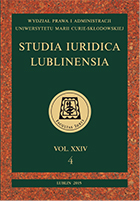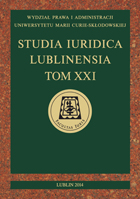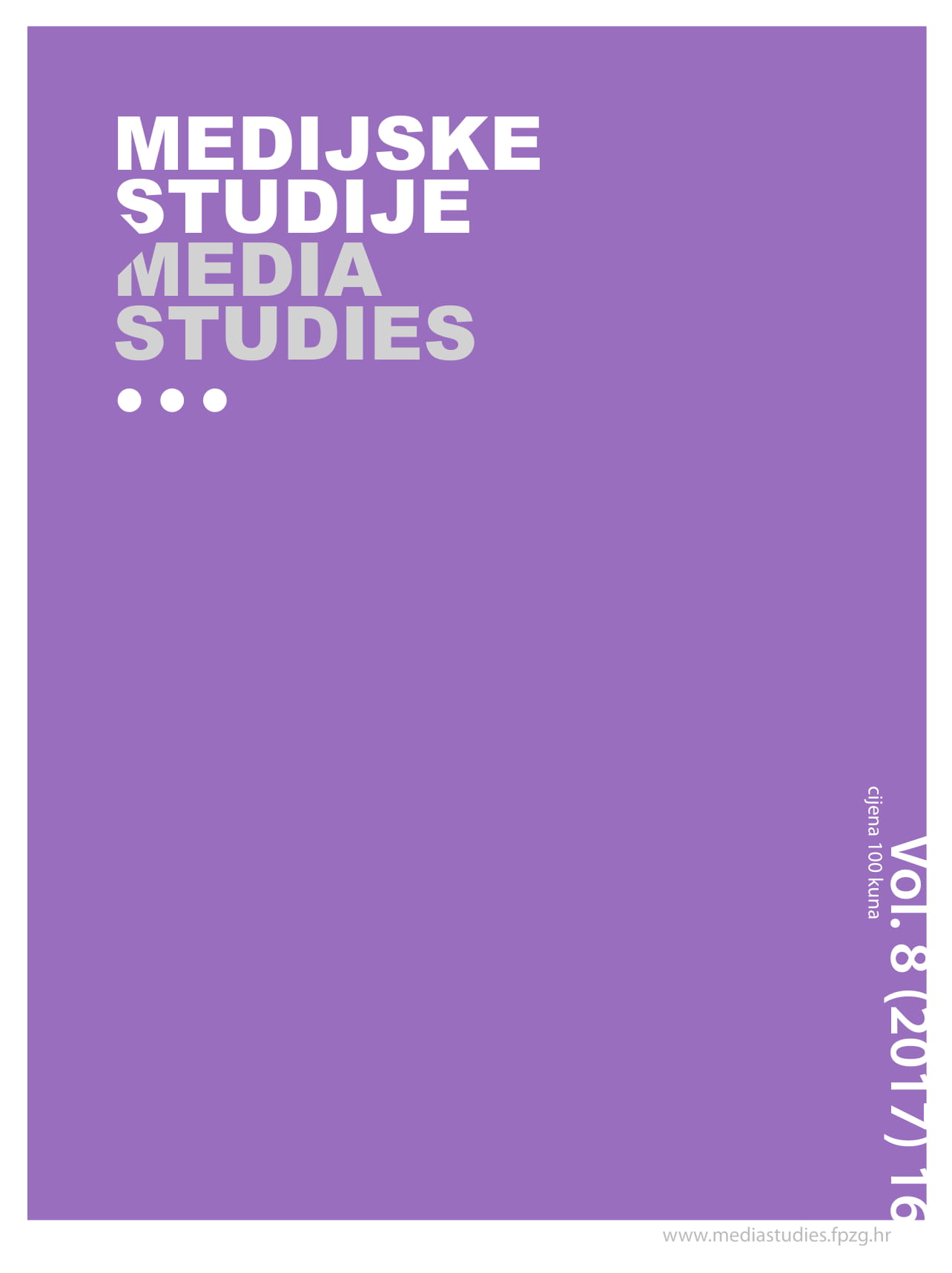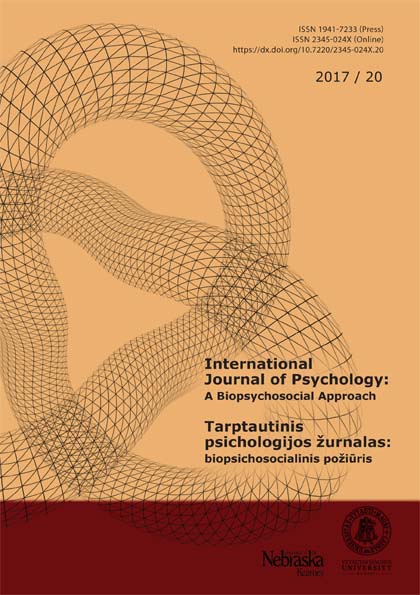
We kindly inform you that, as long as the subject affiliation of our 300.000+ articles is in progress, you might get unsufficient or no results on your third level or second level search. In this case, please broaden your search criteria.


In scientific literature, two concepts are used – medicalization and biomedicalization. There rises a question which of these concepts and when they should be used when old age is analyzed? Term medicalization is quite familiar and for many decades has been used in sociological and biomedical discourses. Conrad (2007, p. 4) defines medicalization as a “process by which nonmedical problems become defined and treated as medical problems, usually in terms of illness and disorders”. The first research examined medicalization of deviance: alcoholism, substance abuse, mental disability, etc. However, scientists identified that more and more humans conditions which have been considered as normal or natural became medicalized, and old age is one example of such alteration. The medicalization of old age manifests in various ways. First of all, old age itself and ageing process are defined as medical condition which should be treated (Estes and Binney, 1987; Weitz, 2010, Kaufman et al., 2004). Medicalization of old age manifests in attempts to control and to treat natural processes which take place in aging body: hormonal imbalances, flabby skin, boldness, graying hair, erectile dysfunction, etc. (Conrad, 2007; Marshall, 2007; Watkins, 2008). Physicians, pharmacists and ageing people themselves actively try to find cure or be cured from ageing “disease”; a wide spectrum of preparations, supplements, cosmetics and drugs are offered in purpose to do so. Scientists (Clarke et al., 2003; Joyce and Mamo, 2006; Maturo, 2012; Bell and Figert, 2010) noticed changes which have emerged in health care sector firstly in Western countries since the end of last century and argued that medicalization concept and medicalization theoretical framework is not adequate to explain all of these changes. Thus, a new concept was introduced. Adele Clarke and her colleagues (2003) suggested term biomedicalization which supposes to encompass and explain these shifts. Biomedicalization is defined as “increasingly complex, multisited, multidirectional processes of medicalization, both extended and reconstituted through the new social forms of highly technoscientific biomedicine” (Clarke et al., 2003, p. 161). The main role in biomedicalization process is performed by technoscientific innovations, such as biotechnologies, genetic engineering, the newest medical innovations and interventions, molecular biology, etc. Biomedicalization of old age refers to radical and even drastic health care sector specialists’ intervention into ageing process with the purpose to control and manipulate of ageing process: stop, slow or even eliminate it from human life time.
More...
This article articulates and examines the problem of how to represent addicts and addiction in media content. The authors conduct a quantitative and qualitative content analysis of selected daily press in Croatia (Jutarnji list, Večernji list and 24 sata) from 2015 and a sub-analysis of the target period (Anti-addiction Month) serving to compare two different news cycles. The media coverage of the examined themes, the connotation of such media content and the approach to this issue are analysed. This article provides insight into how addiction, as well as drug addicts, is represented in the selected media, and the implications and consequences such representations carry with them, while exploring the questions such as why these types of representations are present, and whose interests are represented in such representations.
More...
The article deals with the problem of socially significant drug threat. Much attention is paid to the results of a study conducted among first- year students of the National Academy of Culture and Arts for their attitude and possible involvement in drug use.
More...
Objective. The aim of this study is to evaluate differences in emotional expressivity according to the motivation to refuse alcohol in a sample of alcohol dependent patients. Methods. The study sample consists of 142 alcohol-dependent patients (96 males and 46 females) undergoing treatment in Lithuania, Kaunas centre for addictive disorders. Emotional expressivity, motivation to refuse alcohol and alcohol dependency are measured by Lithuanian versions of The Stages of Change Readiness and Treatment Eagerness Scale (SOCRATES), Five Expressivity Facet Scale and AUDIT test. Results. Highly motivated alcohol-dependent males express more positive and negative emotions; also, they have significantly higher expressive confidence and higher emotional impulse intensity than those alcohol-dependent males with low motivation to refuse alcohol. Highly motivated alcohol-dependent females have higher emotional impulse intensity and they express more positive emotions comparing to low motivated females. Conclusions. Increased motivation to refuse alcohol is significantly related to some positive aspects of emotional expressivity. Highly motivated alcohol-dependent patients (both males and females) show higher emotional impulse intensity and higher expression of positive emotions. So, applied psychosocial interventions make significant changes in emotional expressivity and this perhaps is significant for the development of new perception of alcohol dependency and for making behavioural changes.
More...
Excessive gambling is considered to be a part of the addiction spectrum. Stress-like emotional states are a key feature both of pathological gambling (PG) and of substance addiction. In substance addiction, stress symptomatology has been attributed in part to “anti-reward” allostatic neuroadaptations, while a potential involvement of anti-reward processes in the course of PG has not yet been investigated. Methods: To that end, individuals with PG (n = 22) and mentally healthy subjects (n = 13) were assessed for trauma exposure and post-traumatic stress symptomatology (PTSS) using the Life Events Checklist and the Civilian Mississippi Scale, respectively. Results: In comparison with healthy subjects, individuals with PG had significantly greater PTSS scores including greater physiological arousal sub-scores. The number of traumatic events and their recency were not significantly different between the groups. In the PG group, greater gambling severity was associated with more PTSS, but neither with traumatic events exposure nor with their recency. Conclusions: Our data replicate prior reports on the role of traumatic stress in the course of PG and extend those findings by suggesting that the link may be derived from the anti-reward-type neuroadaptation rather than from the traumatic stress exposure per se.
More...
Problematic practice of physical exercise (PPPE) has been suggested to be a behavioral addiction. Impulsivity represents a core dimension of behavioral addictions. However, little is known about impulsivity facets in PPPE. The aim of this study was to investigate the role of impulsivity facets in PPPE. Methods: A total of 684 students (between 18 and 25 years) took part in this study and filled up a battery of questionnaire, which consisted of following measures – Global Physical Activity Questionnaire, Exercise Dependence Scale – Revised, and the UPPS Impulsive Behavior Scale. Multiple regression analyses were utilized to investigate the predictive role of each impulsivity facet in PPPE. Results: Age, the total level of physical activity per day, sex (male), negative urgency, and sensation seeking were found to be significant predictors of PPPE. A categorical analysis of PPPE revealed that negative urgency, positive urgency, and sensation seeking were significantly higher in the dependent category of PPPE. Discussion and conclusions: Associations to negative urgency and sensation seeking might indicate that PPPE serves to regulate or alleviate negative affect or aversive emotional states. Thus, PPPE could be conceptualized as a short-term coping strategy dedicated to relieving negative affective states, like other maladaptive behaviors such as binge eating, binge drinking, or compulsive buying.
More...
Although alcohol intake and gambling often co-occur in related venues, there is conflicting evidence regarding the effects of alcohol expectancy and intake on gambling behavior. We therefore conducted an experimental investigation of the effects of alcohol expectancy and intake on slot machine gambling behavior. Methods: Participants were 184 (females = 94) individuals [age range: 18–40 (mean = 21.9) years] randomized to four independent conditions differing in information/expectancy about beverage (told they received either alcohol or placebo) and beverage intake [actually ingesting low (target blood alcohol concentration [BAC] < 0.40 mg/L) vs. moderate (target BAC > 0.40 mg/L; ≈0.80 mg/L) amounts of alcohol]. All participants completed self-report questionnaires assessing demographic variables, subjective intoxication, alcohol effects (stimulant and sedative), and gambling factors (behavior and problems, evaluation, and beliefs). Participants also gambled on a simulated slot machine. Results: A significant main effect of beverage intake on subjective intoxication and alcohol effects was detected as expected. No significant main or interaction effects were detected for number of gambling sessions, bet size and variation, remaining credits at termination, reaction time, and game evaluation. Conclusion: Alcohol expectancy and intake do not affect gambling persistence, dissipation of funds, reaction time, or gambling enjoyment.
More...
The current DSM-5 diagnosis of Internet Gaming Disorder (IGD; American Psychiatric Association [APA], 2013) has led to a number of issues and concerns that we highlighted in our recent paper (Kuss, Griffiths, & Pontes, 2017). Experts in the field responded to our evaluation of these issues resulting in six commentaries. Methods: In this paper, we offer responses to the six commentaries to move the scientific field forward. All of the responses to our original paper highlighted many conceptual, theoretical, and/or methodological problems with the proposed IGD diagnosis as outlined in the DSM-5. We outline some ways forward in overcoming issues and concerns in the gaming studies field. Results: We argue that rather than stigmatizing gaming per se, the role of scientists and practitioners is to establish a clear-cut distinction between someone who may use games excessively but non-problematically and someone who is experiencing significant impairment in their daily lives as a consequence of their excessive gaming. This responsibility needs to be shared by popular media who are often quick to build a moral panic around gaming behaviors, often based on cherry-picking specific case studies and pieces of research which support their headlines. Conclusion: Researchers, practitioners, gaming developers, and the media need to work together and collaboratively to build a realistic and comprehensive understanding of gaming as a normal, enjoyable, and often beneficial sociocultural practice, which for a small minority of excessive users may be associated with the experience of addiction-related symptoms that may require professional support.
More...
The proposed inclusion of Internet gaming disorder (IGD) into the upcoming ICD-11 has caused mixed reactions. Having a sound diagnostic framework for defining this new phenomenon has been applauded but concerns have risen regarding overpathologizing a mere pastime activity. The review by Aarseth et al. (2016) provides a fine but one-sided impression on IGD. What has been totally left out in the argumentation is the clinical perspective. Although the concerns depicted must not be ignored, the conclusion provided by the authors is reflecting quite subjective speculations while objectivity would rather be needful.
More...
Concerns about problematic gaming behaviors deserve our full attention. However, we claim that it is far from clear that these problems can or should be attributed to a new disorder. The empirical basis for a Gaming Disorder proposal, such as in the new ICD-11, suffers from fundamental issues. Our main concerns are the low quality of the research base, the fact that the current operationalization leans too heavily on substance use and gambling criteria, and the lack of consensus on symptomatology and assessment of problematic gaming. The act of formalizing this disorder, even as a proposal, has negative medical, scientific, public-health, societal, and human rights fallout that should be considered. Of particular concern are moral panics around the harm of video gaming. They might result in premature application of diagnosis in the medical community and the treatment of abundant false-positive cases, especially for children and adolescents. Second, research will be locked into a confirmatory approach, rather than an exploration of the boundaries of normal versus pathological. Third, the healthy majority of gamers will be affected negatively. We expect that the premature inclusion of Gaming Disorder as a diagnosis in ICD-11 will cause significant stigma to the millions of children who play video games as a part of a normal, healthy life.
More...
The recent paper by Aarseth et al. (2016) questioned whether problematic gaming should be considered a new disorder particularly because “Gaming Disorder” (GD) has been identified as a disorder to be included in the next (11th) revision of the World Health Organization’s International Classification of Diseases (ICD-11). Methods: This study uses contemporary literature to argue why GD should be included in the ICD-11. Results: Aarseth and colleagues acknowledge that there is much literature (including papers by some of the authors themselves) that some individuals experience serious problems with video gaming. How can such an activity be seriously problematic yet not disordered? Similar to other addictions, gaming addiction is relatively rare and is in essence a syndrome (i.e., a condition or disorder characterized by a set of associated symptoms that tend to occur under specific circumstances). Consequently, not everyone will exhibit exactly the same set of symptoms and consequences, and this partly explains why those working in the problematic gaming field often disagree on symptomatology. Conclusions: Research into gaming is not about pathologizing healthy entertainment, but about pathologizing excessive and problematic behaviors that cause significant psychological distress and impairment in an individual’s life. These are two related, but (ultimately) very distinct phenomena. While being aware that gaming is a pastime activity which is enjoyed non-problematically by many millions of individuals worldwide, it is concluded that problematic gaming exists and that it is an example of disordered gaming.
More...
Online gaming has greatly increased in popularity in recent years, and with this has come a multiplicity of problems due to excessive involvement in gaming. Gaming disorder, both online and offline, has been defined for the first time in the draft of 11th revision of the International Classification of Diseases (ICD-11). National surveys have shown prevalence rates of gaming disorder/addiction of 10%–15% among young people in several Asian countries and of 1%–10% in their counterparts in some Western countries. Several diseases related to excessive gaming are now recognized, and clinics are being established to respond to individual, family, and community concerns, but many cases remain hidden. Gaming disorder shares many features with addictions due to psychoactive substances and with gambling disorder, and functional neuroimaging shows that similar areas of the brain are activated. Governments and health agencies worldwide are seeking for the effects of online gaming to be addressed, and for preventive approaches to be developed. Central to this effort is a need to delineate the nature of the problem, which is the purpose of the definitions in the draft of ICD-11.
More...
In their debate contribution, Aarseth et al. (2016) strongly argue against the proposal of WHO ICD-11 (International Classification of Diseases, 11th revision) to include Gaming Disorder as a new diagnostic category emphasizing the fact that no consensus exists on the definition and the risk that gaming will be demonized and gamers stigmatized resulting in a tsunami of false positive referrals to treatment. In this commentary, it is argued that gaming is indeed just another relatively innocent recreational activity with only a small minority losing control resulting in gaming-related problems. It is also argued that – despite a lack of full consensus on the diagnostic criteria – there are clear indications that Gaming Disorder is a relevant clinical entity worldwide and that official recognition as a mental disorder is urgently needed to facilitate the further development, accessibility, and reimbursement of the treatment.
More...
Internet addiction (IA) was recently defined as a disorder tagging both the impulse control and the reward systems. Specifically, inhibitory deficits and reward bias were considered highly relevant in IA. This research aims to examine the electrophysiological correlates and autonomic activity [skin conductance response (SCR) and heart rate] in two groups of young subjects (N = 25), with high or low IA profile [tested by the Internet Addiction Test (IAT)], with specific reference to gambling behavior. Methods: Oscillatory brain activity (delta, theta, alpha, beta, and gamma) and autonomic and behavioral measures [response times (RTs) and error rates (ERs)] were acquired during the performance of a Go/NoGo task in response to high-rewarding (online gambling videos and video games) or neutral stimuli. Results: A better performance (reduced ERs and reduced RTs) was revealed for high IAT in the case of NoGo trials representing rewarding cues (inhibitory control condition), probably due to a “gain effect” induced by the rewarding condition. In addition, we also observed for NoGo trials related to gambling and video games stimuli that (a) increased low-frequency band (delta and theta) and SCR and (b) a specific lateralization effect (more left-side activity) delta and theta in high IAT. Discussion: Both inhibitory control deficits and reward bias effect were considered to explain IA.
More...
The inclusion of Gaming Disorder (GD) criteria in the 11th Revision of the International Classification of Diseases (ICD-11) beta draft was recently criticized, and an argument was made for its removal to “avoid a waste of public resources.” However, these misleading statements are believed to be based on under estimation of this ever-growing problem. Such claims may endanger public health and the psychosocial well-being of affected individuals. Thus, the seriousness of the problem was briefly emphasized in our response paper. We provided an overview of how debates of this kind were developed in our region. In addition, we addressed the arguments made on research and children’s rights. The accusation that GD exerts negative impacts on children’s freedom and stigmatizes healthy gamers may arise from a false belief that this new digital media is benign or not addictive. Such statements could be true in some, but not all, cases. Unwillingness to recognize the addictive potential of gaming, as well as insistence on treating GD simply as an individual problem, are reminiscent of the era in which alcoholism was viewed as a personality problem. These dangerous views place affected individuals at greater health risk and further stigmatize them. Formalization of the disorder is also expected to help in standardization of research and treatment in the field. The inclusion of GD in the upcoming ICD-11 is a responsible step in the right direction.
More...
There are ongoing controversies regarding the upcoming ICD-11 concept of gaming disorder. Recently, Aarseth et al. have put this diagnostic entity into scrutiny. Although we, a group of Iranian researchers and clinicians, acknowledge some of Aarseth et al.’s concerns, believe that the inclusion of gaming disorder in the upcoming ICD-11 would facilitate necessary steps to raise public awareness, enhance development of proper diagnostic approaches and treatment interventions, and improve health and non-health policies.
More...
Data from a specialist treatment facility for Internet addiction (IA) in Japan showed that (a) the vast majority of treatment seekers are addicted to online games, (b) their symptoms are often quite severe, and (c) there is a significant demand for IA treatment. In addition, systemic obstacles to the delivery of medical services in Japan exist due to the exclusion of IA criteria from ICD-10. Consequently, the inclusion of GD criteria in ICD-11 will almost certainly increase the capacity and quality of treatment through advances in research and possible changes in national medical systems to meet treatment demand.
More...
The main aim of this study was to analyze and describe the clinical characteristics and shared personality traits in different impulsivity–compulsivity spectrum disorders: substance use disorders (SUD), gambling disorder (GD), and bulimia nervosa (BN). The specific aims were to compare personality differences among individuals with pure SUD, BN with and without SUD, and GD with and without SUD. In addition, we assessed the differential predictive capacity of clinical and personality variables in relation to diagnostic subtype. Methods: The sample comprised 998 subjects diagnosed according to DSM-IV-TR criteria: 101 patients were diagnosed with SUD, 482 with GD, 359 with BN, 11 with GD + SUD, and 45 patients with BN + SUD. Various assessment instruments were administered, as well as other clinical measures, to evaluate their predictive capacity. Results: Marked differences in personality traits were observed between groups. Novelty seeking, harm avoidance, self-directedness, cooperation, and self-transcendence best differentiated the groups. Notably, novelty seeking was significantly higher in the two dual pathology subgroups. Patients with dual pathology showed the most dysfunctional personality profiles. Discussion and conclusion: Our results indicate the existence of shared dysfunctional personality traits among the groups studied, especially in novelty seeking and self-directedness.
More...